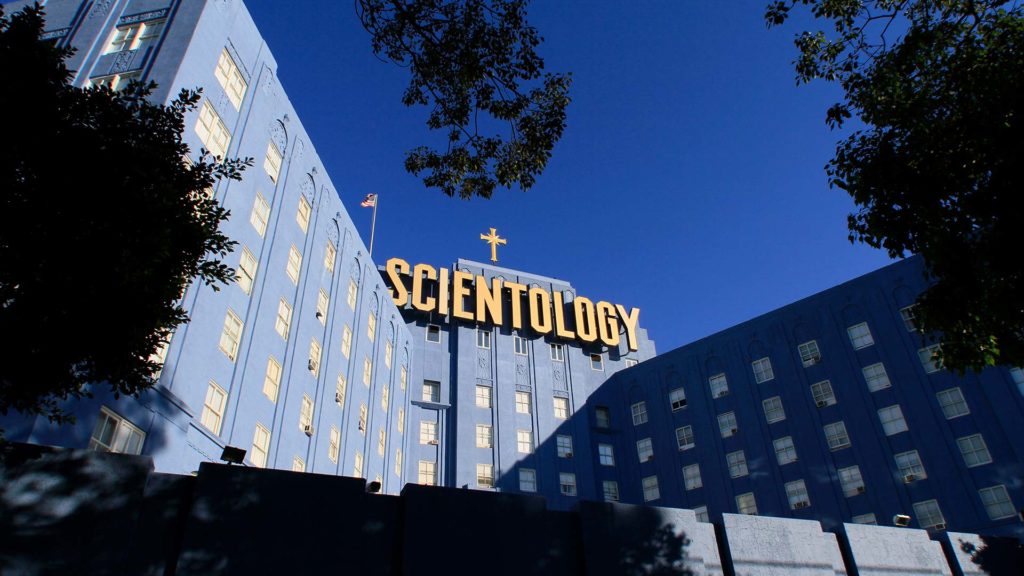
It isn’t always obvious who owns Los Angeles’ notable old buildings, but 4833 Fountain Avenue requires no research more intensive than an upward glance. There, in sixteen-foot letters, its current stewards have mounted — lest the symbolism of the eight-pointed cross at the tip of the rooftop pyramid prove too obscure — the word “SCIENTOLOGY.” Every Angeleno’s list of quintessential Los Angeles experiences differs, but mine includes brunching across the street from that sign, mimosas and migas enjoyed under its looming presence as well as the blue paint job (which, unsettlingly, sometimes matches the sky) and mammoth scale (at least compared to the blocks of Hollywood around it) of the building holding it aloft.
Then there’s another, even more palpable presence: that of security, not just in the form of endlessly looping, bicycle-mounted security guards, but cameras installed in countless positions both seen and no doubt unseen. That will surprise nobody even casually familiar with the public profile of the Church of Scientology, owner of 4833 Fountain and at least 25 other properties across Hollywood. Members who defect and publicly tell their stories have drawn stern responses from the organization, to say the least, as have investigative journalists who try to find just what goes on behind the azure walls of the building Scientology officially calls its Pacific Area Command Base, or more casually, “Big Blue.”
Though the information those ex-Scientologists and reporters have come out with suggests that its doctrine deals with events going back trillions of years, the Church of Scientology itself was founded relatively recently, in 1954, by science-fiction writer L. Ron Hubbard. Having made his first journey out to Los Angeles to write for the movies in the mid-1930s, the Nebraska-born Hubbard worked on “Dianetics,” which would become Scientology’s foundational text, in an office on Sunset Boulevard during the 1940s. At the time of the book’s publication in 1950, he’d opened an operation called the Hubbard Dianetic Research Foundation on Hoover Street. Despite having lead a fairly peripatetic life up to that point, he seemed to have adopted Hollywood as his own neighborhood.
Read the whole thing at KCET.